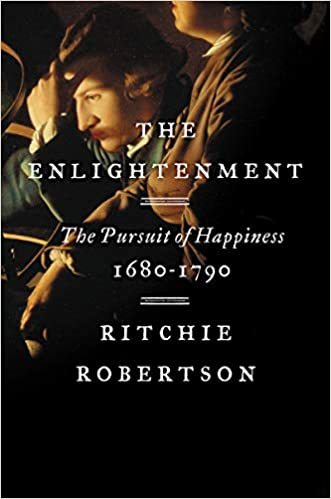#ReadWithMe: Ritchie Robertson’s The Enlightenment: Science Goes Public

Early in the Enlightenment, science was still haunted by the specter of charlatanry, and scientists were keen to demystify science. The Royal Society came into existence, illustrating the emphasis on community and conversation.
I hope all of you have by now found the perfect summer read! If you’re like me, that spans a lot of genres, and includes at least one ambitious (read: door stopper) read. As you saw in my previous post, Ritchie Robertson’s book on the Enlightenment is part of my summer reading.
- Given the Enlightenment emphasis on inquiry and experience, and, “Precisely because its claims were modest, natural science became the model for all knowledge.” (63) To what extent do you believe this remains true today, and why?
- Robertson describes an interesting division of labor in his discussion of Enlightenment intellectuals. He says, “Academies were devoted to research, not teaching. It was considered that they should complement universities by doing original research, whereas universities concentrated on transmitting what was already known.” (78) Are there any analogies you can think of today that operate in this manner? To what extent do you think the higher education system today should function like this?
- How “public” is the practice and/or dissemination of science today? How has this changed the nature and practice of science?
- Robertson has a brief but interesting section on the marketing of science to women. (81-2) At least in part, Robertson suggests this was done because women would become the popularizers of scientific ideas. Given the barrage of information we see about women’s under-representation in STEM fields, should we assume this a failed strategy? Who are the most effective popularizers of science today?
Comments
1. I hope this comes up in a later chapter, but I wonder if the Enlighteners themselves stepped too far away from the scientific method at some point? We certainly have today.
3. We all have so much access to so much information, but I was jealous reading about regular folks being able to go to Royal Society experimental demonstrations and lectures! Even with today's science celebrities, we don't really have public discourse about science. I wonder how much those public events really worked back then though?
4. Interesting to me that Robertson's description is market-based. From the single long paragraph, hard for me to tell how many of the publications had a goal beyond sales. Definitely a failed strategy, if the strategy was ever to get more (any back then) women into science. I am not the keenest analyzer of culture, but it seems to me that men are still the most numerous, and therefore probably the most effective, popularizers of science.
Great chapter, with lots of good scene-setting. I was particularly struck by the closing paragraph of the "Heavens and Earth" section (77), where Robertson notes that the replacement of biblical chronology with scientific "deep time" was as big a shock then as evolution would be in the 19th century. Thinking about going into the Enlightenment with those cultural tremors still reverberating is a nice call back to his point in the first chapter about the role of mentality shifts.
-John
@John, I am SO with you on #3. Somehow, Bill Nye the Science Guy just doesn't seem the same, right? I wonder if that's more a function of shift in medium? In other words, as we've gained new/better tech, "science" has become available to LOTS more people. (Everyone?) But what gets lost in this process? I mean, I'm pretty sure not EVERY one was able to go to the Royal Society for demos... Though obviously I was struck (a la question 4) by his treatment of marketing science to women. Alas, I'm afraid I agree with you there...